Long-time iPhone users remember when Apple Maps launched to widespread criticism for inaccuracy and poor functionality, making Google Maps’ iOS arrival feel like a rescue mission. Apple invested years improving their native mapping solution, achieving respectable results. Yet Google Maps remains the default choice for many iPhone owners, particularly those embedded in Google’s broader ecosystem.
Our comprehensive evaluation of Apple Maps on iOS 26 examines whether recent updates justify reconsidering your navigation app preferences. We’ve conducted extensive real-world testing to assess new features, interface improvements, and competitive positioning against Google Maps.
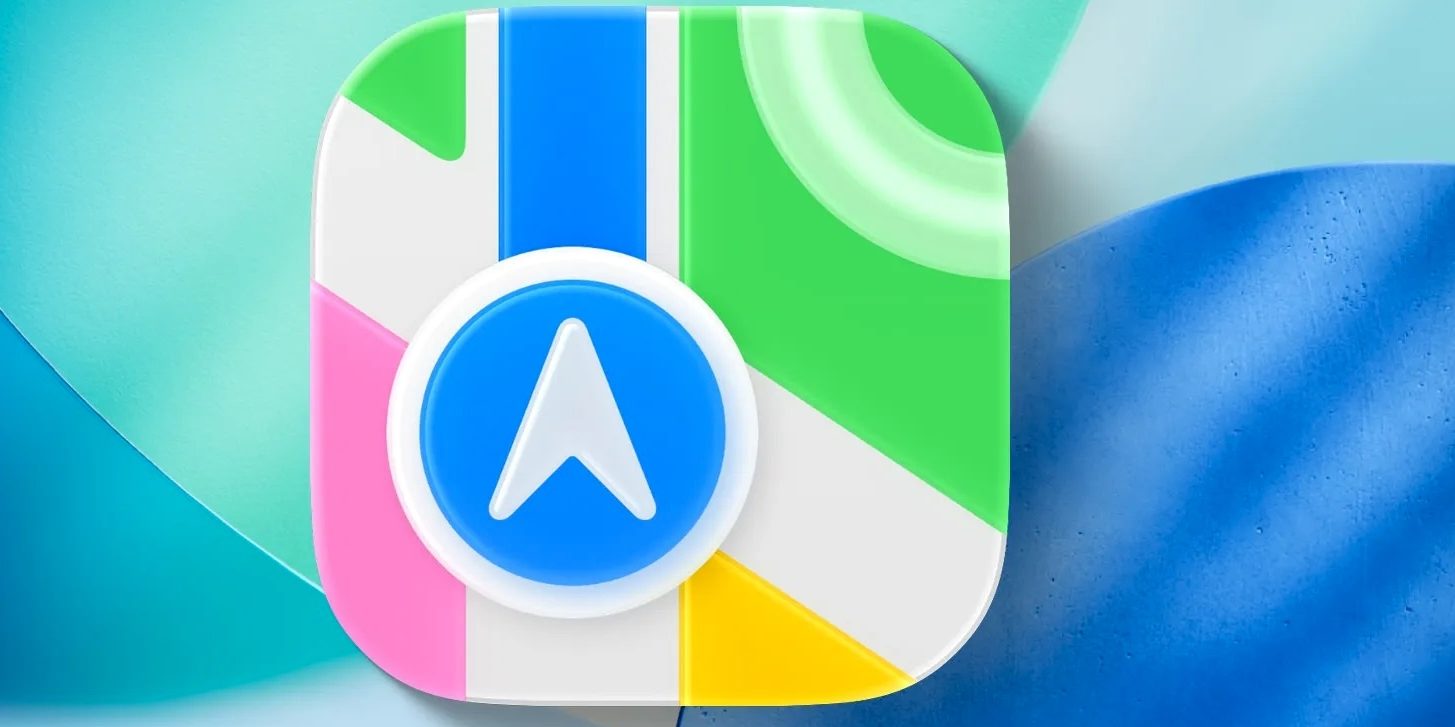
Our Evaluation Approach
Testing Methodology: We evaluated Apple Maps through extended daily use across multiple scenarios including urban navigation, commute tracking, and location discovery. Our assessment focused on practical functionality rather than theoretical capabilities, ensuring recommendations reflect actual user experiences.
Key Assessment Areas:
- Interface design and visual clarity
- New feature effectiveness and reliability
- Location accuracy and information quality
- Integration with iOS ecosystem
- Privacy considerations and data handling
- Competitive advantages versus Google Maps
Our testing team includes individuals who primarily use Google Maps, providing perspective on the switching experience and potential friction points for users considering alternatives.
Interface Design and Visual Experience
Apple Maps presents a remarkably uncluttered interface that prioritizes essential navigation information. Tapping stores or buildings reveals useful details through clean presentation that avoids overwhelming users with excessive options. Google Maps offers similar functionality with comprehensive information, but sometimes the sheer volume of available options requires parsing through multiple layers.
The iOS 26 implementation includes Liquid Glass material integration throughout the interface. While visually subtle, this design element contributes to a polished aesthetic that feels marginally smoother compared to Google Maps. The effect proves difficult to quantify objectively—it may represent genuine improvement or simply benefit from fresh perspective after extended Google Maps usage.
Widget support adds convenient home screen access, enabling quick glances at commute conditions or nearby locations without launching the full application. This integration feels natural within iOS, though Android users already enjoy similar functionality with Google Maps widgets.
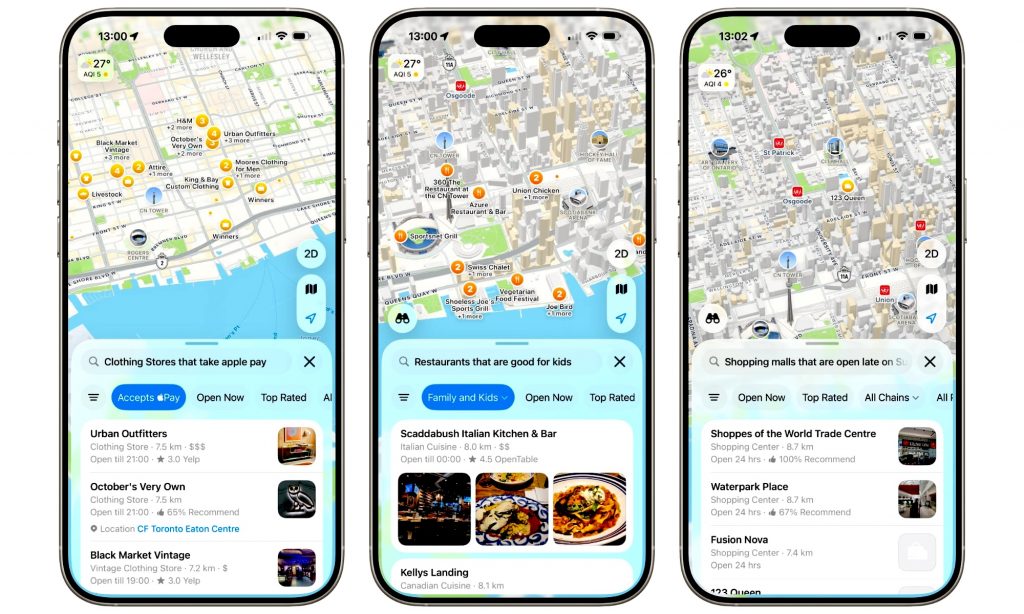
Preferred Routes: Proactive Commute Intelligence
Preferred Routes represents one of iOS 26’s most compelling additions to Apple Maps. The feature learns your regular travel patterns and common routes, then proactively alerts you to delays affecting your typical commute. This automatic monitoring operates without manual route plotting.
The system requires time to learn individual travel patterns through Apple Intelligence integration. Initial functionality depends on establishing consistent route history, meaning immediate benefits may not materialize for new users or those with irregular schedules.
Google Maps offers traffic alerts and delay warnings once you’ve plotted a specific route, but this reactive approach requires user initiation. Preferred Routes’ proactive notifications provide meaningful advantages for commuters following predictable schedules. The feature anticipates needs rather than waiting for explicit requests.
Practical Applications:
- Morning commute preparation without manual checks
- Alternative route consideration before leaving
- Delay awareness for time-sensitive appointments
- Routine travel pattern optimization
The feature’s effectiveness scales with usage consistency—regular commuters gain maximum value while occasional travelers see limited benefits.
Visited Places: Travel History Reimagined
Visited Places enters beta with iOS 26, offering automatic detection and recording of locations you visit. The feature captures restaurants, shops, and various destinations, creating a searchable travel history for reference and information retrieval.
The concept mirrors aspects of Google Maps Timeline functionality, which records routes and locations over time. This historical tracking proves valuable for recalling specific establishments after exploratory wandering, particularly useful when memory proves unreliable.
Google Maps Timeline occasionally suffers accuracy issues, sometimes indicating extended stays at locations you merely passed. While generally useful, these inconsistencies create gaps in reliable travel documentation. Visited Places aims to address similar use cases, though perfect accuracy seems unlikely given the inherent challenges of location tracking.
Apple’s track record with information-centric features suggests strong refinement potential. The company typically iterates carefully on user-facing data features, improving accuracy and usefulness through successive updates. Beta designation indicates ongoing development, with improvements expected as the feature matures.
Privacy Considerations: Location history features naturally raise privacy concerns. Apple emphasizes on-device processing and user control over location data, though comprehensive travel tracking inherently requires collecting detailed movement information. Users must weigh convenience benefits against privacy preferences when enabling these features.
Competitive Analysis: Apple Maps vs Google Maps
Google Maps Strengths:
- Extensive business information and reviews
- Superior cross-platform availability
- Robust integration with Google services
- Mature feature set refined through years of development
- Crowdsourced traffic and navigation data from massive user base
Apple Maps Advantages:
- Native iOS integration and performance optimization
- Cleaner, less cluttered interface design
- Privacy-focused approach to location data
- Seamless ecosystem integration for Apple device users
- Proactive features like Preferred Routes
Use Case Recommendations: Heavily invested Google ecosystem users benefit from cross-platform consistency and service integration that Google Maps provides. Those primarily using Apple devices and prioritizing privacy may find Apple Maps’ native advantages compelling.
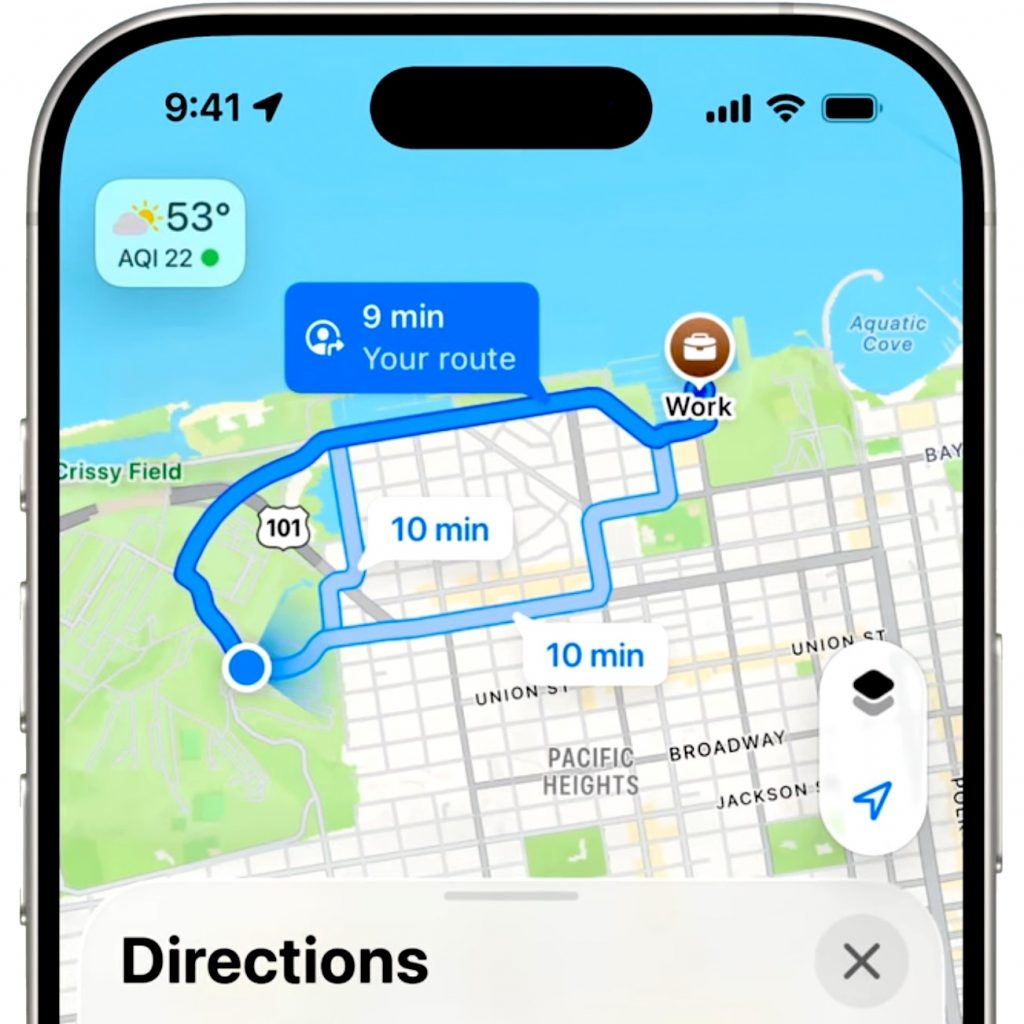
Real-World Performance Assessment
Extended testing revealed Apple Maps handles everyday navigation tasks competently, with reliable directions and accurate arrival estimates. Location search occasionally returns less comprehensive business information compared to Google Maps, reflecting differences in business data partnerships and user-generated content volume.
The interface’s streamlined approach reduces cognitive load during navigation, though some users may miss Google Maps’ extensive feature depth. This represents a fundamental trade-off between simplicity and comprehensiveness.
Traffic data accuracy appears comparable between platforms in urban environments, though Google Maps’ larger user base potentially provides advantages in less-populated areas where crowdsourced information becomes more critical.
Our Assessment and Recommendations
Apple Maps on iOS 26 presents meaningful improvements that justify reevaluation for users who dismissed the platform during its troubled early years. Preferred Routes and Visited Places add genuine value, particularly for iPhone users following regular routines and interested in travel history tracking.
The platform works best for individuals embedded in Apple’s ecosystem who prioritize privacy and appreciate native iOS integration. Google Maps remains the superior choice for users requiring cross-platform consistency, extensive business information, or deep integration with Google services.
Consider Apple Maps if you:
- Primarily use Apple devices and services
- Follow predictable commute patterns
- Value privacy-focused location tracking
- Prefer streamlined, uncluttered interfaces
- Want seamless iOS integration
Stick with Google Maps if you:
- Use multiple platforms beyond iOS
- Rely heavily on other Google services
- Need comprehensive business reviews and information
- Prefer mature, feature-rich navigation tools
- Value cross-device synchronization
Our testing suggests many iPhone users could successfully adopt Apple Maps as their primary navigation solution, particularly those willing to embrace its ecosystem-specific advantages. The platform no longer represents a significant compromise compared to alternatives—it offers genuinely competitive functionality with distinct strengths.
Whether Apple Maps earns your primary navigation loyalty depends on individual priorities around privacy, ecosystem integration, and specific feature requirements. The iOS 26 updates make exploring the platform worthwhile for users who haven’t given Apple Maps serious consideration in recent years.
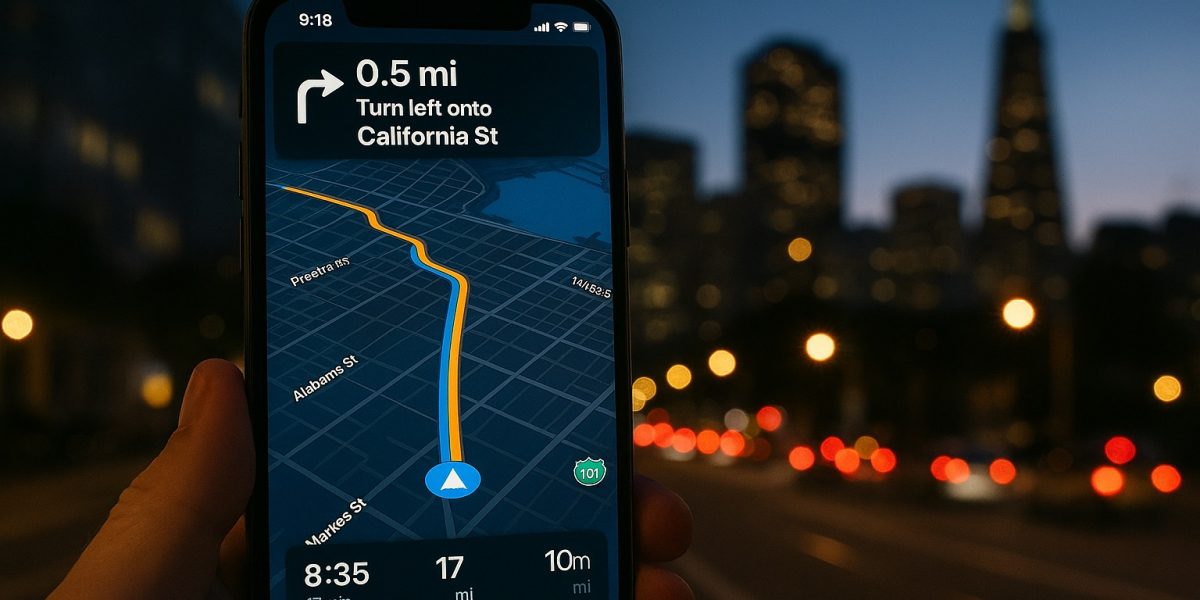

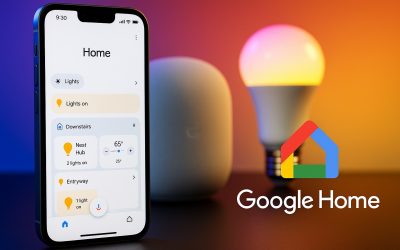

Post a comment